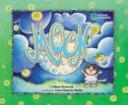Why does the moon appear to change? What is the moon made of? Why does the moon seem to travel through the sky? Discover the answers in the marvelous book, Moon, written by Steve Tomecek and illustrated by Liisa C. Guida. This is a National Geographic Kids “Jump Into Science” book and is geared towards grades 3-4. The content ranges from legends about the moon to brief facts about the scientist Galileo, the astronauts Armstrong and Aldrin. Using kid-friendly language, the author touches on facts and figures relating to distance, diameter, circumference and orbit. The final pages of the book are reserved for a fun, hands-on activity called “Making Craters” involving five simple ingredients that could be completed at school or home. A lively, spotted feline and dazzling firefly grace every page, encouraging children to keep turning the pages to see what they’ll discover next.
Curriculum Connections
This would be a wonderful introductory resource for the concepts of patterns of natural events such as day and night, seasonal changes, phases of the moon, tides, revolution and rotation, relative size, position, age and makeup of the earth, moon and sun, and historical contributions in understanding the Earth-moon-sun system. In the state of Virginia, these correlate with SOL 3.8 and 4.7, Earth Patterns, Cycles, and Change.
Additional Resources
* Click here for an exciting phases of the moon animation.
* Try this activity to simulate the moon’s orbit.
* Check out this webpage to learn how the phases of the moon got their names.
* To foster science process and thinking skills, try: A Moon With a View.
Book: Moon
Author: Steve Tomecek
Illustrator: Liisa C. Guida
Publisher: National Geographic Society
Publication Date: 2005
Pages: 31
Grade Range: 3-4
ISBN: 978-1-4263-0250-3

